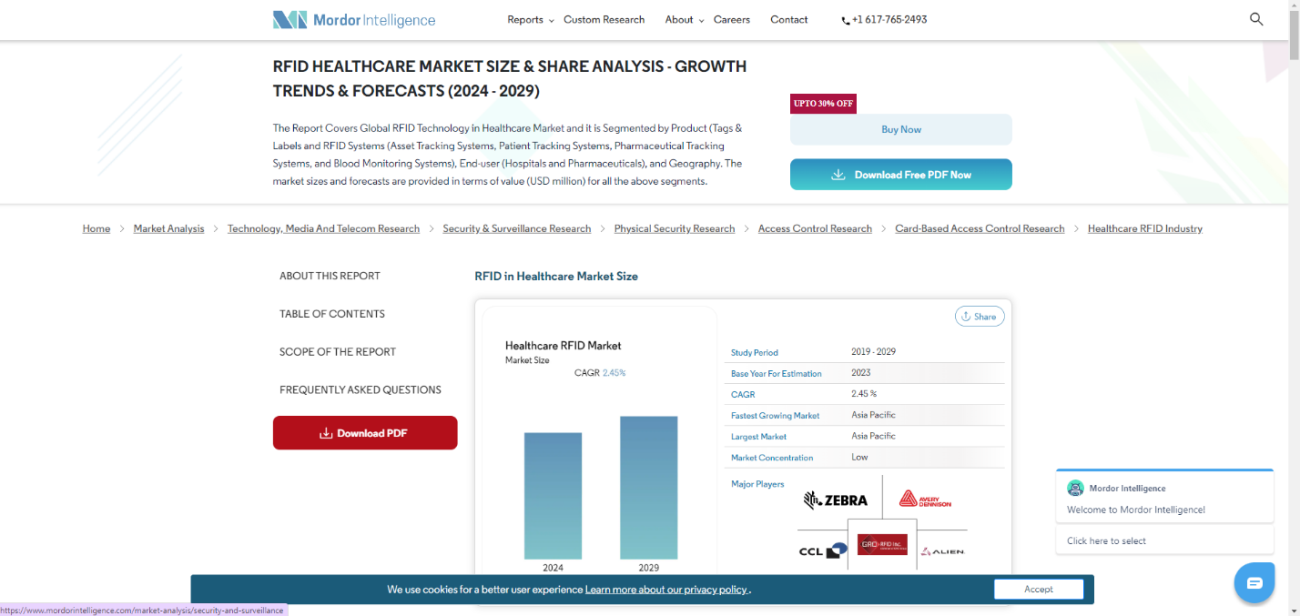
The RFID in Healthcare market, valued at USD 1,231.07 million in 2023, is projected to reach USD 1,389.45 million by 2029, with a CAGR of 2.45%. Asia Pacific is the fastest-growing region, driven by rising medical costs, improved healthcare infrastructure, and regulatory measures. RFID adoption in healthcare has become a catalyst for pharmaceutical companies, ensuring precise control and authentication of medicinal products throughout the supply chain.
The market is fueled by pharmaceutical companies’ efforts to comply with diverse global labeling regulations. Integrating RFID in pharmaceuticals enhances patient safety, reduces errors, and eliminates labor-intensive in-house medication labeling. The technology is also applied in hospitals and pharmacies for inventory management, ensuring quality and reducing waste.
However, challenges include high installation costs and system interoperability. The healthcare industry has witnessed increased RFID adoption during the COVID-19 pandemic, improving efficiency and accountability. Major players such as Zebra Technologies, Avery Dennison, and GAO RFID are driving market growth through strategic initiatives.
Pharmaceutical tracking, patient tracking, and asset tracking are significant application segments, with tags capturing 61.28% market share in 2022. RFID systems and software are expected to dominate, utilized for tracking staff, equipment, and inventories in healthcare facilities. North America held the largest market share of 44.50% in 2022, driven by regulations for patient safety and the increasing number of hospitals.
The report provides a comprehensive analysis, including market dynamics, segmentation by product and application, regional insights, and competitive landscape. It also offers forecasts up to 2029, allowing stakeholders to understand market trends and make informed decisions.
